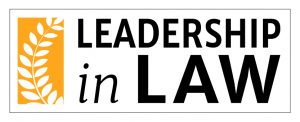A New World of Evidence for Residency Issues: The Selfie
The word “selfies” usually conjures up images of self-absorbed celebrities or pictures taken for pure fun and then shared on social networking websites such as Instagram. You wouldn’t expect someone to use selfies in a tax related matter. But that is exactly what one man did to prove he did not meet the residency requirements of New York State.
As reported on mashable.com, Andrew Jarvis is an architect who travels between New York and Philadelphia frequently for work. Tired of the exhausting commute, he began renting an apartment in New York City. By renting the apartment, Jarvis risked having his income subject to New York State tax…BUT only if he spent more than 183 days in New York. To prepare himself for a possible dispute, Jarvis began taking selfies as a way to prove that he spent more days during the year in Philadelphia than New York City. Jarvis took time-stamped selfies underneath the commuter train marquee or while holding the daily newspaper. Jarvis also purports to have collected receipts from his day-to-day transactions.
An interesting side note: Jarvis’ daughter created an Instagram account to showcase her father’s pictures, mislabeling it “internalrevenueselfies.” Jarvis’ issue deals with New York State residency law, not the Internal Revenue Service!
According to New York State tax law, a taxpayer is considered a resident if he has a permanent place of abode in New York State and spends more than 183 days in the State. A permanent place of abode is any property maintained by the taxpayer, either leased or owned, for substantially all of the taxable year. Jarvis’ New York City apartment would satisfy the first prong of the statutory residency test.
For the second prong, spending more than 183 days in the State, the taxpayer has the burden to prove his whereabouts by clear and convincing evidence. In order to show this, a taxpayer can maintain a diary, appointment log or calendar. He may also produce corroborating documentation such as credit card and bank statements, detailed cell phone bills, EZ Pass records, passport records and data from security or swipe cards. With new technological advances, a person’s location has become easier to track. For example, Monaeo, a mobile phone app, offers a software platform to help companies track their employees solely for location based tax information.
Jarvis’s use of a selfie poses an interesting question: whether New York State will accept this type of technology to prove one’s whereabouts during the tax year in question. It is unsure at this time if Jarvis’ photos will be accepted at face value, as pictures can be altered or “photo shopped.” However, if accompanied by his daily receipts, Jarvis’ photos may be used as corroborating evidence and taken into consideration by New York State.
More information on New York State residency issues can be found here.
Submitted by Marisa Friedrich on Fri, 03/28/2014 – 14:16


